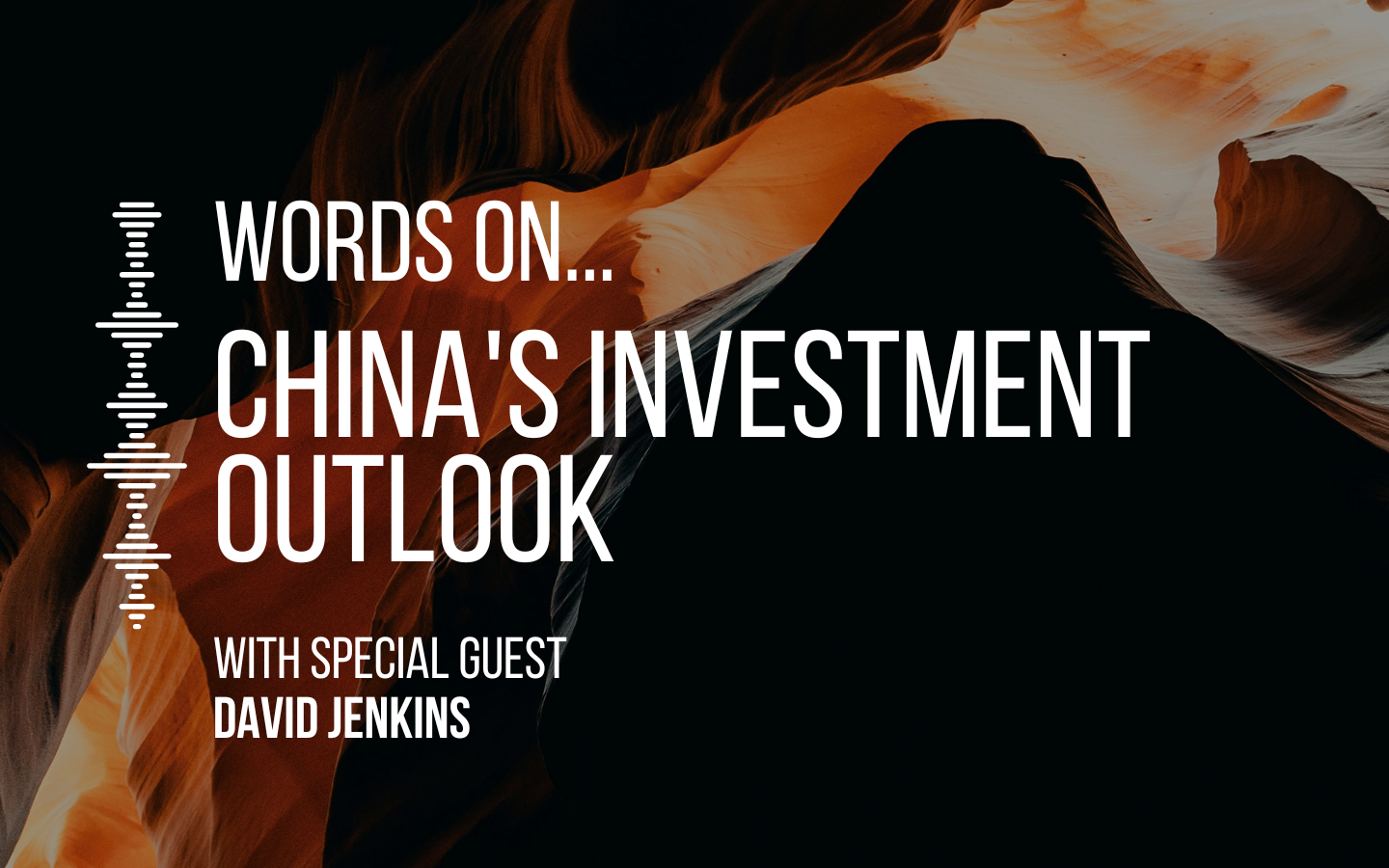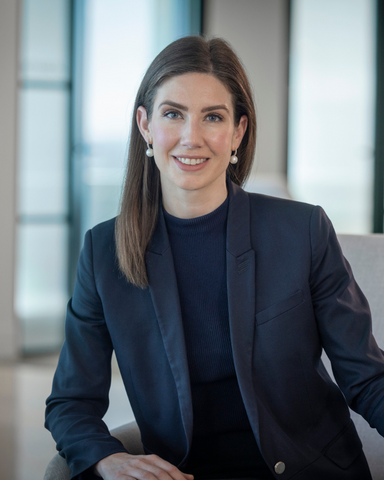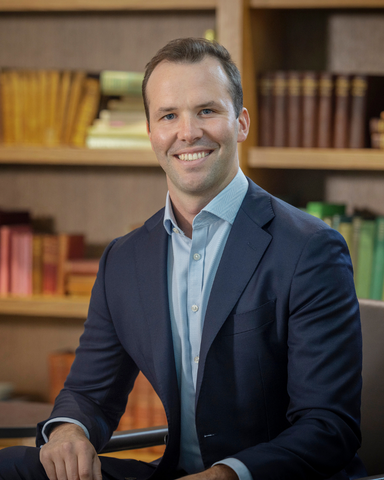


Lucy Meagher
Hello and welcome to the Words on Wealth podcast. My name is Lucy Meagher I’m a senior investment advisor at Evans & Partners. And joining me today is Max Casey. Max is a portfolio strategist here at Evans & Partners and I’m sure he is very familiar to a lot of our listeners. He has been a frequent guest on the podcast as well as publishes a number of our frequent research pieces. But just to review Max’s role and what he does, so Max and his team are in charge of distilling all of the macro information and news that we see and pulling that into tangible and strategic changes for our client portfolios. So that’s exactly what we’re going to do today. So thank you, Max.
Max Casey
Thanks Lucy, good to be on the podcast again.
Lucy Meagher
Absolutely. today, as I mentioned, so part of what you and your team do, it’s looking at that macro and then how we distill that into our client portfolios. So there’s certainly a lot happening on the macro front. We’ll touch on that today for those listeners that are interested in an up-to-date deep dive. I’d refer you to listen to our Monday macro podcast that we released at the start of the week, goes, Max goes into detail on what’s happening at the moment. But, you know, certainly I think it’s fair to say that the geopolitical is really still driving economic markets at the moment. And, you know, causing some problems and uncertainty. So if just to kick off, Max, how are you positioning client portfolios in response to current market volatility?
Max Casey
Yeah, thanks Lucy. So as you mentioned, obviously there’s still lot of uncertainty and there’s still a lot of volatility in markets today. It does seem like we get a new headline effectively every morning when we log on and check our emails. So it does make portfolio construction and positioning client portfolios very difficult. We don’t wanna make too many wholesale changes to portfolios while there is still so much uncertainty and while there is so much back and forth around what trade policy looks like, what domestic policy looks like in the US, in Europe, even here in Australia. So, when we are positioning portfolios today, we do want to ensure that diversification really remains that core principle within portfolios, we wanna be effectively spreading our risk across asset classes and geographies, just simply because there are so many still binary outcomes in global markets. And there are still so many different or such a broad range of outcomes that could occur. So in terms of how we’re doing that, we’ve obviously had parts of the portfolio that have been really core drivers of returns for the last kind of decade. We’d probably call out global equities as being one of those components. And that’s really been led by the US market. And so why we still want to be allocated to that region and why we still want to own those companies for the next 10 years. We’re still really unsure around what the rerouting of global supply chains does for US profit margins. We’re still unsure what uncertainty around trade policy, around interest rates does for business investment, does for household consumption. So we probably do see some risks around one, the US economy, one, and two, the US.
Max Casey
profit outlook. I’d probably say as well, there’s obviously a lot of kind high expectations in the US market as well. Valuations today are still at levels or have re-rated to levels that have only really been exceeded during the dot-com bubble. Earnings expectations for that market still remain really high and the market’s pricing in about 10 to 12 % profit growth over the next three years. So it probably does make that market a little bit vulnerable to some drawdown risk if you do get some unfavorable geopolitical outcomes or some kind of worse economic outcomes than what’s currently expected. And so again, we’re just spreading our risk, spreading our capital potentially away from that region and away and to some markets that are less driven by underlying economic fundamentals. So one particular area that we’ve been allocating to pretty actively in response has been the alternatives asset class. And this might be kind of new to many of the people on this call, but that spans a wide range of sub-asset classes. It includes private equity, private credit, infrastructure, hedge funds, and even diversifiers like gold. And so we think that asset class as a whole is pretty well positioned to navigate the uncertainty in markets today. We’re really calling out infrastructure assets as being particularly durable. They you know, they have defensive and really kind of transparent and consistent cashflow profiles. These are assets that have, you know, monopolistic positions in their respective economies. So they should be relatively well immune from trade policy and from a potential slowdown in economic growth. We’re continuing to call out private credit as well. This is potentially gonna be more susceptible to credit risk, to economic risk, but our base case is that we still probably see about a 50 % chance of a US recession. But that recession would likely be shallow rather than kind of deep and pronounced. And so we think the credit environment would hold up relatively well. And that kind of goes for more the broader interest rate securities asset class as well. So we’re still seeing some really attractive opportunities in high quality credit. Yields are a little bit lower today than what they were a couple of months ago. But they still do look attractive relative to pricing than what you can see in kind of traditional risk assets. So, know, summing that up, we’re just broadening our asset allocation across, you know, a wider range of return drivers. We do think the return outlook, it does look a little bit more challenging today than what it did, say 12 months ago. So we’re also just trying to revise some of those return expectations amongst our client base, just a little.
Lucy Meagher
Yeah, that alternatives piece in particular is really interesting and I think we should touch on that again a bit later. But I was wondering if I could go back to what you saying, particularly around the US and earnings profile. know, currency is obviously a very large component in that we’ve seen the US dollar continue to depreciate against most currencies. Part of that is, you know, by design. But how do you see that playing into when you look at your capital markets assumptions going forward? What impact would a weaker US dollar have?
Max Casey
Yeah, so we’ve been, I would like to think we’ve been pretty vocal in terms of our view on the US dollar that we do kind of see a more pronounced weakening in terms of that currency going forward. So, know, a weakening against the Australian dollar, a weakening basically against, you know, most major currencies and that’s really played out over the course of this year. The Aussie dollar, it got belted around a little bit for a while there. It kind of trended down towards 58 cents, but now it’s kind of back up hovering around 65 cents. We probably see some scope for that to head higher from here, just given, one, some of the concerns around US debt sustainability and some of the physical pressures that are continuing to kind of emerge that there. We’re seeing a pretty pronounced sell-off in long end US government bonds in response to that. And it’s kind of difficult to see those concerns being eased anytime soon. I think this is a long term issue that we need to be focused on. And so if you are going to see a weakening US dollar and a strengthening Aussie dollar, it does mean that you’re potentially going to have a capital loss on your unhedged international exposures from an Aussie dollar perspective. So, again, we’re being pretty vocal in terms of switching any unhedged international exposures into hedged exposures. But then we’re also kind of thinking about if you did see a pronounced period of US dollar weakness, what does that mean for US assets as well? US assets have seen incredible amount of buying from foreign investors over the last couple of decades, really. And so now if you’re going to see a scenario where the US dollar is expected to depreciate over a five or 10 year period, you might see a liquidation of those US assets from those foreign investors. So this could potentially put downward pressure on US bonds, downward pressure on US equities as well. So that’s something that we’re being very mindful of. And it kind of goes back to around how we think about asset allocation in terms of short-term ideas and short-term positioning versus long-term positioning as well and market moves that might or have the potential to create really long-term drivers or headwinds to returns.
Lucy Meagher
Yeah, I think the other interesting component there is, you know, a weaker US dollar potentially making exports more competitive. And does that actually have a shorter term positive impact on on US earnings is another, I guess, just another component, seeing how hard it is to, you know, to make any certain forecasts. But if we if we discuss so, you know, another component of of how again, we’re distilling these these macro and economic observations into client portfolios. You know the key ways that your team does this is looking at strategic asset allocation which is our longer term allocation to different asset classes which really is a key determinant of portfolio returns over that medium to longer term and then that’s obviously complemented with a tactical asset allocation, is being able to remain dynamic and quickly respond to those shorter term market mispricing opportunities. So are there any significant changes that you’ve made to either strategic asset allocation or tactical in the current environment?
Max Casey
Yep. Yeah, so if we’re talking about the strategic asset allocation, we made a pretty material change a couple of years ago. And this was after we’d seen a resetting of interest rates. So we obviously had that really low interest rate period in the aftermath of COVID, where the yield on cash was effectively 50 basis points, even less in some occurrences. And so as we came out of that and as central banks had to tighten policy and raise interest rates to combat inflation, we effectively had this resetting of interest rates. And so that really re-emerged the interest rate securities asset class and we could get yields on credit instruments and government bonds anywhere between five and 7%. And so we thought that was a trend that would last for two to five years, anywhere between there. So that met our definition of a strategic asset allocation. We increased our allocation to income-orientated assets and fixed income-orientated assets. And that’s been a trade that’s worked well. Those assets typically have lower volatility. They pay income, which is traditionally well received by our clients. So that’s an example of a long-term strategic change that we’ve made. We’re just thinking about some other ones at the moment, around this US dollar devaluation story, around the US debt story and what that means for interest rates going forward and potentially equity risk premiums as well. So we’re thinking about that from a five to 10 year view. From a tactical perspective, we typically think about tactical trades or tilts anywhere between three and 12 months time horizon. And so these are really, you know, where are risks mispriced or where are, where is sentiment or where have opportunities emerged that look potentially oversold or ignored by the broader market. And, you know, if we identify an opportunity like that, we’ll go overweight or we’ll initiate a trade in that area of the market. you know, something that we recently did was, you know, in mid April, you know, in the aftermath of the liberation day, sell-off. Equity markets drew down between 15 and 20 percent. We said that’s an interesting opportunity to buy the Australian equity market. We identified the Australian equity market as being pretty well immune from global trade risks. also saw valuations fall to much more appropriate and respectable levels. So that gave us some confidence to buy that market, I’d probably say in hindsight though that that opportunity was pretty short-lived. It didn’t last too long and we kind of quickly said, you know, that opportunity is probably gone. So you did have to be quite nimble in order to kind of take advantage of that. The other area is currency. You know, we spoke about it before, but the Aussie dollar got down to 58 US cents and we said, if you’re gonna buy the US market, if you’re gonna buy global markets, you need to do that on a hedge basis, because that looks well and truly oversold. We’ve also just seen some interesting opportunities in credit and in government bonds. We’ve had some opportunities to buy government bonds when yields got up around 5%. We’re kind of quickly approaching that level again, so we’ll assess that trade when we get there. But that kind of just gives you a flavor of how we think about know, tactical tilts, tactical asset allocation and the time horizons that we’re working to on those ideas.
Lucy Meagher
Yeah, that’s great. And I think it’s important to see, and we have the data to show this, that tactical asset allocation, if you are able to be nimble and respond to those market responses, you’re able to achieve a degree of outperformance over time. So they really can be alpha generating changes that your team recommends. So how is it that you ensure that portfolios remain resilient in with short-term market noise that we’re seeing, how do they remain resilient and also align to clients’ long-term objectives?
Max Casey
Yeah, so I think that is very important in today’s context. I mentioned it before, but it does feel like we’re getting a new policy announcement, a new headline every night and every morning that we wake up. So it is proving, it’s difficult and you need to be patient. You need to be able to kind of weather that news and weather the volatility in markets and not kind of jump at shadows or make wholesale changes too quickly to those announcements. Because what we are finding is that they can quickly be reversed or quickly changed. So when we are thinking about aligning portfolios to long-term objectives, we’re really putting that three to five year hat on when we are making these investment decisions, which I think is working in our favor. We also don’t wanna be calling clients up every day having to turn over their entire portfolio because we had one piece of news overnight. That’s not an efficient use of anyone’s time. And we also want to be mitigating other things like transaction costs as well. So again, we are really focusing on the long-term view. And at the moment, one example is this debate around interest rates is around the US physical position. And our view is that we’ve probably entered a period now of much more volatile and much higher interest rates. And that is going to have long lasting implications on basically most assets that a client will own in their portfolio. So it affects the cost of capital that the businesses effectively have to borrow at it affects the mortgage rates that households incur and what that does for global consumption or domestic consumption. So we are thinking around what are the long-term implications of that? How can we profit from it? How can we mitigate some of the risks and what assets do we want to be allocating to ensure that our clients’ long-term objectives are going to be met? And if they’re not, we need to have those discussions with clients that maybe those expectations need to be revised lower, or we simply just need to take on a little bit more risk than what we might have had to previously.
Lucy Meagher
Yeah, I think that’s a good point to segue and spend a little bit more time around how on how we’re thinking about fixed income allocations because obviously we saw, you know, the RBA meeting last week. That was a cut as expected, but what was probably less expected was the robust discussion around the potential for a 50 basis point cut. So markets factoring in another three cuts this year, you know, to what you spoke there, there’s a potential for an income gap for clients that have been relying on a certain level of income generated from their portfolios. So I know when you spoke about alternatives before, there’s certainly a role for private credit that we’re looking at for client portfolios, but how are you approaching fixed income allocations?
Max Casey
Yep, so like as I said, it’s probably been our favorite asset class for the last two years. It has felt quite easy just to make money in that asset class. As I said, we’ve had yields of 6 to 7 % for owning very high quality underlying issuers. I’m talking about the major banks and the major insurers here. Domestically, if we went offshore, you could own US companies and European companies and again, high quality companies and you could get yields, you know, around eight and 9 % just because base rates were simply so elevated. So it does feel like we’ve kind of, we’ve missed or we’re past now the Goldilocks period for fixed income. It is going to become a little bit more challenging as central banks ease interest rates. And the other thing you got to remember is central banks are easing interest rates because the economic environment is more challenged. So we are starting to see unemployment tick up a little bit. We are starting to see
you know, some more business insolvencies and so central banks need to respond to that and ease policy. risks have increased and the return that we’re getting unfortunately probably isn’t as high as what it once was. So we do need to be a little bit more selective, a little bit more dynamic in terms of how we allocate to the fixed income market. know, hybrids have been really popular with our clients. We’ve really enjoyed allocating to that market and getting yields of about 7%. If we get three more rate cuts this year, that number’s probably gonna have a five in front of it. And so as you said, that creates an income gap. So we are starting to go on a bit of an education process with clients around what are some stop gaps or some assets that can sit. Alongside hybrids, we don’t want to not own hybrids or even higher quality banking instruments like tier two subordinated bonds, again, have been really popular with our client base. But potentially we need to look at some higher risk exposures in order to mitigate or minimize that income gap. So you mentioned private credit. We still really remain comfortable with some of the exposures that we’re allocating to in private credit. We can do that domestically and internationally and we’re comfortable with our managers and the process and the due diligence that they go through when they are lending money to borrowers. These are large scale managers that have very diversified books of issuers and when we are allocating to markets like the US, the size of these underlying borrowers is just factors larger than what you can get here domestically as well. Something we’re just mindful of as well, is just making sure we’re diversified within that private credit landscape. We don’t just wanna have 100 % of our private credit book in real estate, which again, is really popular here for Australian investors. It’s certainly less so for US and European investors that their market is much more dominated by direct lending to corporates. So that’s certainly an area that we want to continue to increase exposure to, just to diversify sector and regional risks. The other thing is we just want to quickly as well look at kind of some asset backed style exposures as well. So again, something a little bit different, a little bit more diversified and a little bit, has some different return drivers to traditional corporate lending as well.
Lucy Meagher
I was just going to call out there too, our product review group did a really excellent piece of research into the global private credit sector, really detailed, really to your point, looking at best in class managers that are well diversified and that’s available should any clients want to have a bit of a deep dive into the sector, but there’s a lot of resource, time and expertise that goes into our recommendations in that space.
Max Casey
Yeah, a lot of hard work went into that space and not just call out as well. We are seeing a huge proliferation of private credit products. This is a good thing, but it’s also a bad thing. We want to ensure that we’re providing our clients with exposure to the highest quality managers that go through the most rigorous due diligence process as well. Because ultimately they’re investing our client capital and we want them to do it as responsibly and on the best risk adjusted return basis as possible.
Lucy Meagher
Yeah, okay, so in fixed income allocations it’s looking at potentially balancing that hybrid or liquid exposure with some slightly higher risk allocations or reviewing your overall return expectations from that asset class.
Max Casey
Yep, that’s spot on. And so again, we don’t just have to be solely focused on the fixed income asset class as well, but potentially you can consider reallocating some of that capital that’s previously been sitting in fixed income to the alternative asset class. I mentioned infrastructure before, you can typically get yields between three and 4 % there and hopefully capital growth of around four or five percent to kind of take you up around that 10 % hurdle as well. So we continue to kind of advocate for clients to look at that asset class as well.
Lucy Meagher
Great. That’s fantastic, Max. Thank you. I think that’s given us a really good update on where we’re seeing opportunities and some changes that we’re making in response to the ever-changing landscape that, as you said, is day by day at the moment. So just a reminder for all our clients and listeners, what Max and I have discussed today is general advice. And if you have any further questions, we encourage you to reach out to your advisor. But thanks for tuning in today.
Max Casey
Thank you.
Tags
Disclaimer
This podcast was prepared by Evans and Partners Pty Limited AFSL 318075.
Any advice is general advice only and was prepared without taking into account your objectives, financial situation or needs. Before acting on any advice, you should consider whether the advice is appropriate to you. Seeking professional personal advice is always highly recommended. Where this presentation refers to a particular financial product, you should obtain a copy of the relevant PDS, TMD or offer document before making any investment decisions. Past performance is not a reliable indicator of future performance.
Directors, employees and officers of Evans and Partners and its related bodies corporate may have holdings in the securities discussed. Any taxation information is general and should only be used as a guide.
This communication is not intended to be a research report (as defined in ASIC Regulatory Guides 79 and 264). Any express or implicit opinion or recommendation about a named or readily identifiable investment product is merely a restatement, summary or extract of another research report that has already been broadly distributed.



